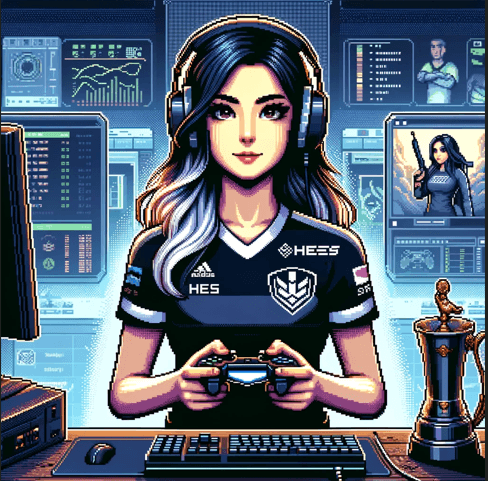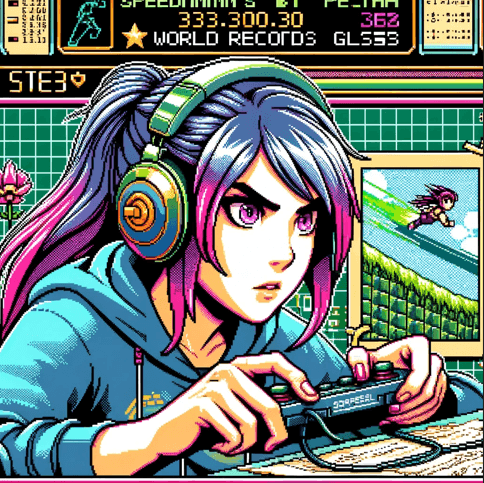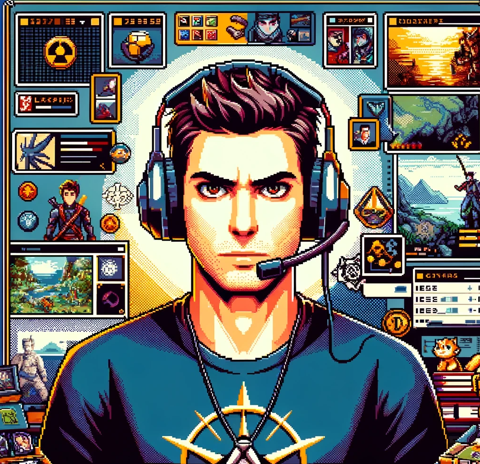 First things first, let’s dive into OMORI by OMOCAT, LLC. From user reviews, it’s clear this game has made incredible strides in exploring heavy psychological themes. It’s not often that a game delivers such a profound emotional impact.
First things first, let’s dive into OMORI by OMOCAT, LLC. From user reviews, it’s clear this game has made incredible strides in exploring heavy psychological themes. It’s not often that a game delivers such a profound emotional impact.
 For sure! If you’re open to introspection and ready to tackle difficult topics, this is definitely a game worth sinking your teeth into. Many players have praised it for its thoughtful portrayal of mental illness, trauma, and the journey toward healing. It’s an experience that resonates deeply.
For sure! If you’re open to introspection and ready to tackle difficult topics, this is definitely a game worth sinking your teeth into. Many players have praised it for its thoughtful portrayal of mental illness, trauma, and the journey toward healing. It’s an experience that resonates deeply.
 The overarching narrative is undeniably heavy; however, from a speedrunner’s perspective, the combination of bright, colorful graphics and the dark, intricate storyline strikes a perfect balance that keeps engagement high. Additionally, the intuitive controls make gameplay accessible, while the emotion-based battle system introduces a distinctive layer of complexity that keeps each encounter fresh and exciting.
The overarching narrative is undeniably heavy; however, from a speedrunner’s perspective, the combination of bright, colorful graphics and the dark, intricate storyline strikes a perfect balance that keeps engagement high. Additionally, the intuitive controls make gameplay accessible, while the emotion-based battle system introduces a distinctive layer of complexity that keeps each encounter fresh and exciting.
 I’m especially fascinated by the game’s commitment to symbolism and dichotomy, as one user pointed out. The environment shifts based on Sunny’s mental state, creating a dynamic experience. The emotion system in battles not only adds strategic depth but also complements the narrative, making it highly rewarding for completionists.
I’m especially fascinated by the game’s commitment to symbolism and dichotomy, as one user pointed out. The environment shifts based on Sunny’s mental state, creating a dynamic experience. The emotion system in battles not only adds strategic depth but also complements the narrative, making it highly rewarding for completionists.
 Moving on to visuals, OMORI masterfully juxtaposes a seemingly innocent, light-hearted style with darker themes. The contrast between the sunny, grounded reality and the whimsical, dreamlike fantasy reflects the unfolding narrative beautifully.
Moving on to visuals, OMORI masterfully juxtaposes a seemingly innocent, light-hearted style with darker themes. The contrast between the sunny, grounded reality and the whimsical, dreamlike fantasy reflects the unfolding narrative beautifully.
 Absolutely. Exploring OMORI isn’t just about traversing vibrant retro-inspired RPG landscapes. Each hidden area in the dream world feels like an extension of Sunny’s psychological journey. This immersive setup makes every discovery feel significant.
Absolutely. Exploring OMORI isn’t just about traversing vibrant retro-inspired RPG landscapes. Each hidden area in the dream world feels like an extension of Sunny’s psychological journey. This immersive setup makes every discovery feel significant.
 When it comes to audio, the game’s soundtrack has garnered plenty of praise. From calming melodies to haunting tunes, the music enhances the atmosphere in every scene. While there’s no voice acting, the audio design doesn’t feel lacking—it fits the tone of the game perfectly.
When it comes to audio, the game’s soundtrack has garnered plenty of praise. From calming melodies to haunting tunes, the music enhances the atmosphere in every scene. While there’s no voice acting, the audio design doesn’t feel lacking—it fits the tone of the game perfectly.
 The characters are another standout feature. In OMORI, they’re not just game elements—they’re representations of Sunny’s emotions and life experiences. Even without dialogue, their relationships and development shine through. Watching their stories unfold, and sometimes tragically conclude, adds depth and emotional weight.
The characters are another standout feature. In OMORI, they’re not just game elements—they’re representations of Sunny’s emotions and life experiences. Even without dialogue, their relationships and development shine through. Watching their stories unfold, and sometimes tragically conclude, adds depth and emotional weight.
 The challenge level in OMORI stands out in its subtlety. It’s not punishingly hard, but it offers unique challenges, particularly in mastering the emotion-based combat system. Interestingly, user reviews often focus less on difficulty and more on the emotional impact, which speaks volumes about the game’s design.
The challenge level in OMORI stands out in its subtlety. It’s not punishingly hard, but it offers unique challenges, particularly in mastering the emotion-based combat system. Interestingly, user reviews often focus less on difficulty and more on the emotional impact, which speaks volumes about the game’s design.
 This emotional depth contributes significantly to OMORI’s replayability. While it may not boast extensive side quests or alternate paths, its multi-layered narrative and unexpected plot twists create a compelling reason to revisit. Each playthrough reveals new details, making it worth diving into again and again.
This emotional depth contributes significantly to OMORI’s replayability. While it may not boast extensive side quests or alternate paths, its multi-layered narrative and unexpected plot twists create a compelling reason to revisit. Each playthrough reveals new details, making it worth diving into again and again.
 Final thoughts? OMORI is tough to compare because it has carved out a unique niche. Its focus on narrative-heavy themes, paired with simple, retro-inspired graphics and mechanics, creates a distinctive experience. The developers have crafted something truly special.
Final thoughts? OMORI is tough to compare because it has carved out a unique niche. Its focus on narrative-heavy themes, paired with simple, retro-inspired graphics and mechanics, creates a distinctive experience. The developers have crafted something truly special.
 For completionists like me, OMORI is a treasure trove of hidden clues, subtext, and metaphors. It’s a beautifully complex game that likely still holds secrets waiting to be uncovered. I hope the developers continue taking creative risks and exploring profound human emotions.
For completionists like me, OMORI is a treasure trove of hidden clues, subtext, and metaphors. It’s a beautifully complex game that likely still holds secrets waiting to be uncovered. I hope the developers continue taking creative risks and exploring profound human emotions.
 As players, we should remember that some games go beyond entertainment—they’re opportunities to step into another perspective and come out changed.
As players, we should remember that some games go beyond entertainment—they’re opportunities to step into another perspective and come out changed.
 Here’s to OMOCAT, LLC pushing boundaries in future projects. And who knows? Maybe an OMORI sequel will grace us someday.
Here’s to OMOCAT, LLC pushing boundaries in future projects. And who knows? Maybe an OMORI sequel will grace us someday.
 Agreed! Whatever the future holds, we’ll be here, eagerly awaiting what this talented developer creates next, controllers in hand and minds wide open.
Agreed! Whatever the future holds, we’ll be here, eagerly awaiting what this talented developer creates next, controllers in hand and minds wide open.
